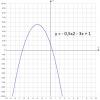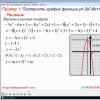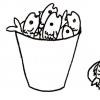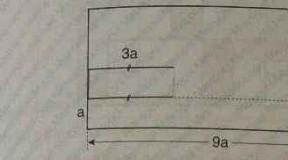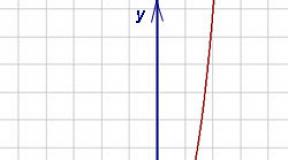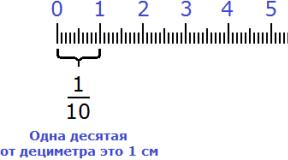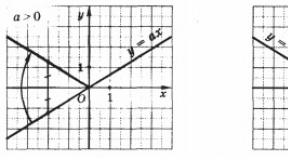Hospital diets by numbers. A brief description of the treatment tables according to M.I. Pevzner
| Diet (table) number, indications | The purpose of the diet and its general characteristics | Recommended and excluded or restricted products |
| 0. After operations on the abdominal organs and some others (within 3-6 days). | Sparing the digestive organs, low calorie content up to 1000 kcal. Diet: 5-6 or more times a day in small portions. | Recommended: liquid, jelly-like dishes: compote, jelly, jelly, broth, liquid porridge, soft-boiled egg, omelet, soufflé, pudding. |
| 1a. Chronic gastritis with persistent and high acidity in remission. 1b. Stomach ulcer and duodenum, hyper- and normacidny gas-trit, after diet No. 0 and during an exacerbation. | Decrease in reflex excitability of the stomach, repair of moderately damaged mucosa; reduction of mechanical, thermal and chemical irritation of the digestive tract, caloric content up to 3000 kcal. Food regimen: 5-6 times a day in small portions. | Chopped boiled food, steamed, baked dishes without a crust are recommended. Meat broths, hot seasonings, canned food, very cold and too hot dishes are prohibited; limited: extractives, table salt up to 10-12 g, liquid up to 1.5 liters. |
| 2. Chronic hypacid gastritis in the exacerbation stage, chronic enteritis and colitis outside the exacerbation stage | A full-fledged moderately sparing food with stimulation of secretory function and normalization of intestinal motility, calorie content of 2800-3000 kcal. Diet: 4-5 times a day without heavy meals. | Recommended food in chopped boiled and stewed form, baked and fried dishes without a crust. Food that lingers in the stomach for a long time and fermenting (fiber, milk), very cold and hot dishes, spices. |
| 3.Chronic bowel disease with irritable bowel syndrome; constipation, hemorrhoids, rectal fissures | A good diet, rich in fiber and stimulating intestinal peristalsis, calories 2800-3000 kcal. Diet: 3-4 times a day. | Vegetables, legumes, fruits, black bread, milk are recommended. Excluded or limited: strong tea, coffee, white bread, white porridge, confectionery. NaCl - 15 g, liquid - unlimited. |
| 4a, 4d. Acute and chronic intestinal diseases, chronic enteritis (diarrhea, pronounced dyspeptic phenomena). 4b, 4c. Gastroesophageal reflux disease, violation of the chewing apparatus. 4e. Glutenic enteropathy, celiac disease | Restriction of mechanical, chemical irritants of the mucous membrane and the receptor apparatus of the gastrointestinal tract in order to reduce the inflammatory process and normalize digestion, caloric content up to 2500 kcal. Diet: 5-6 times a day in small portions. | Slimy soups, cereals, steam cutlets, jelly, strong tea are recommended; all dishes boiled or steamed, mashed. Fats and carbohydrates, table salt up to 8-10 g and liquid up to 1.5-2.0 liters are limited. |
| 5.Diseases of the liver and biliary tract | Chemical sparing of the liver with adequate nutrition, normalization of the functions of the liver and biliary tract, improvement of bile secretion, calorie content 2800-3000 kcal. Diet: 4-5 times a day. | Boiled, baked dishes, low-fat cottage cheese, fruits are recommended. Fried food rich in extractives, cholesterol (eggs), very cold foods are excluded, fats (especially hard) are limited, NaCl up to 10 g, liquid up to 1.5-2.0 liters. |
| 5P 1. Acute pancreatitis; chronic pancreatitis, expressed or in the stage of damping exacerbation. 5P 2. Chronic pancreatitis in remission. | Sparing the pancreas, calories up to 2500 kcal. Diet: 4-6 times a day. | Recommended set of products and preparation - as in diet number 5. Restriction of all food components |
| 6. Gout, urine acid diathesis. 6O. Oxaluria | Normalization of purine metabolism, reduction of endogenous formation of uric acid, normal calorie content. Diet: 4-6 times a day. | Dairy-vegetable food is recommended, mainly the alkaline reaction of the products. Limiting products containing oxalic acid and calcium (meat, fish, some vegetables), increasing fluid intake to 2-2.5 liters. |
| 7.Diseases of the kidneys and urinary tract, hypertension | Sparing the kidneys and urinary tract, reducing hypertension and edema, improving the excretion of nitrogenous and other toxins, calories 2500-3000 kcal. Diet: 4-5 times a day. | Restriction of liquid to 1 l, proteins and table salt (3-6 g per patient's hands); exclusion of strong tea, coffee, extractives. We recommend boiled meat and fish only, increasing the potassium content in food (dried apricots, potatoes). |
| 7a, 7b. Chronic glomerulonephritis with moderately pronounced impairment of nitrogen excretory function of the kidneys and azotemia 7c, 7d. Chronic glomerulonephritis of the nephrotic type in the stage of attenuating exacerbation, chronic glomerulonephritis without impairment of renal excretory function and azotemia | Sparing the kidneys, increased reparative processes in glomeruli, calorie content up to 2650 kcal (7a and 7b), up to 2400 kcal (7c and 7d). Diet: 5-6 times a day | Recommendations: enrichment of the diet with vitamins and minerals. Excluded: nitrogenous extractives, alcohol, cocoa, chocolate, coffee, salty snacks. Limited to: protein up to 40-60 g (7a), up to 20 g (7b), NaCl up to 3 g (7a), up to 1.5 g per day (7b), liquid up to 1 liter per day (7a), up to 0 , 8 l (7b), starch-rich dishes are steamed or boiled without salt and chopping. 7c, 7d. Good nutrition. Spicy snacks, seasonings, spices are excluded. Limited to NaCl to 6-8 g per day, |
| 8 obesity | Normalization of metabolism, elimination of excess fat deposits, calorie content 1200-1800 kcal. Diet: 5-6 times a day. | Restriction of carbohydrates and animal fats, sodium chloride, spices and extractives, liquids up to 1-1.5 liters. Fried and mashed dishes are not recommended. Sugar substitutes, vegetables rich in fiber, fruits, lactic acid products, lean meat, fish, buckwheat are recommended. |
| 9. Diabetes mellitus type 1. 9a. Type 2 diabetes mellitus with obesity | Normalization of carbohydrate metabolism, prevention of lipid metabolism disorders, reduction of caloric content: up to 2000-2500 kcal (9), up to 1300-1600 (9a). Diet: 5-6 times a day with an even distribution of carbohydrates. | Sugar and sweets are excluded, other carbohydrates and animal fats, cholesterol, extractives, NaCl up to 10-12 g (9), up to 3-5 g (9a), liquid up to 1.5 liters are limited. Recommended products rich in lipotropic substances, vitamins, fiber: cottage cheese, fish, seafood, vegetables, unsweetened fruits, buckwheat porridge, coarse bread, sugar substitutes (xylitol, sorbitol) |
| 10. Diseases of the cardiovascular system with circulatory insufficiency I - II degree, atherosclerosis. 10s. Cardiovascular disease if you are overweight | Normalization of the functions of the cardiovascular system and metabolism, improvement of the excretion of nitrogenous toxins and under-oxidized products, caloric content up to 2500 kcal (10), up to 1300-1600 kcal (10s). Diet: 5-6 times a day in small portions. | Restriction of NaCl to 5-6 g per hand, liquids up to 1.2 liters, substances that excite the nervous and cardiovascular system are excluded: strong tea, coffee, cocoa, chocolate, meat, fish and mushroom broths, spicy dishes, products cholesterol-rich foods that cause flatulence. It is recommended to enrich the diet with potassium, vitamins and lipotropic substances (10), vegetable fats and vegetable fibers: raw vegetables, bran (10c). The mass of the daily ration is within 2 kg, |
| 11. Tuberculosis, dystrophy. | Improving nutritional status, normalizing metabolism, increasing immunoreactivity and recovery processes in organs, increasing calorie content up to 3700 kcal. Diet: 4-5 times a day | Foods rich in animal proteins and fats, vitamins, calcium and iron are recommended: meat, fish, liver, dairy products, vegetables, fruits. NaCl - 15 g, liquid - 1.5 l. Culinary processing - any. |
| 11-M. Low blood | Improving nutritional status, restoring hematopoiesis, increasing calorie content up to 3000-3400 kcal. Nutritional regimen: 4-5 times a day | Recommendations - as in diet number 11. |
| 11-N. Suppurative processes in the lungs | Fighting inflammation, stimulating the repair of lung tissue, increasing the calorie content up to 3000-3400 kcal. Diet: 5 times a day. | Recommendations: enriching food with lipotropic substances, limiting carbohydrates and table salt to 10 g, otherwise - like diet number 11. |
| 12.Nervous diseases mental illness | Reducing the excitability of the central nervous system while maintaining the nutritional value, the calorie content is normal. Diet: 4 times a day. | Mainly dairy and vegetable food is recommended. Spicy dishes, spices, strong tea, coffee, alcoholic beverages are excluded. NaCl - 10-12 g. |
| 13.Acute infectious diseases | Sparing the digestive organs and the cardiovascular system, enhancing the elimination of toxins and toxic substances, calorie content up to 2500 kcal. Diet: 5-6 times a day. | Recommended liquid and puree food rich in vitamins, frequent drinking up to 2-2.5 liters, food temperature not higher than 60 o C. Coarse fiber, milk and other foods that cause flatulence, spicy and spicy foods are excluded. |
| 14.Phosphaturia, kidney and ureteral stones | Fortification of the diet with acids, reduction of phosphaturic diathesis by limiting alkaline reaction products containing phosphorus and calcium. Calorie content is normal. Diet: 4 times a day | Limiting milk and dairy products, vegetables and fruits rich in calcium and phosphorus. The widespread use of meat, fish and other products with an acidic reaction is recommended, NaCl -15 g, liquid up to 2.5 liters. |
| 15. Common table - for convalescents and for diseases that do not require special diets | A complete diet, rich in vitamins and minerals, calories 2800-2900 kcal. Diet: 4 times a day. | All cooking methods are allowed. The most difficult to digest foods are excluded. NaCl - 15 g, liquid - 2 l. |
Literature
1. Bolshakov A.M. A guide to laboratory exercises in general hygiene. - M .: Medicine, 2004.
2. Bolshakov A.M., Novikova I.M. General hygiene. - M .: Medicine, 2002.
3. Gabovich R.D., Poznansky S.S., Shakhbazyan G.Kh. Hygiene. Ed. 3rd, rev. and add. - Kiev: High School, 1984.
4. Hygiene: Textbook. Ed. 2nd, rev. and add. / Ed. acad. RAMS G.I. Rumyantsev. - M .: GEOTAR-MED, 2001 .-- 608 p.
5. Hygienic standards "Maximum permissible concentration (MPC) of pollutants in the air of populated areas" GN 2.1.6.695-98. - M., 1998.
6. Hygienic requirements for natural, artificial and offset lighting of residential and public buildings: SanPiN 2.2.1 / 2.1.1.1278-03. - M .: Federal Center State Sanitary and Epidemiological Supervision of the Ministry of Health of the Russian Federation, 2003.
7. Hygienic requirements for water quality in decentralized water supply. Sanitary protection of sources: SanPiN 2.1.4.1175-02. - M., 2002.
8. Hygienic requirements for the microclimate of industrial premises: SanPiN 2.2.4.548-96. - M., 1996.
9. Hygienic requirements for ensuring the quality of atmospheric air in populated areas: SanPiN 2.1.6.1032-01. - M., 2001.
10. Gorlova O.E., Bolshakov A.M., Kicha D.I. Occupational hygiene at the enterprises of the chemical and pharmaceutical industry: Teaching method. allowance. - M .: Publishing house of RUDN, 2001 .-- 39 p.
11. Gorlova O.E., Kudasheva V.A., Gurova A.I., Drozhzhina N.A. A guide to laboratory exercises in general hygiene. Part 1. Food hygiene: Textbook. allowance. - M .: Publishing house of RUDN, 1999 .-- 126 p.
12. Gurova A.I., Gorlova O.E.Workshop on general hygiene: Textbook. allowance. - M .: Publishing house of UDN, 1991 .-- 177 p.
13. Instruction on the sanitary regime of pharmacy organizations (pharmacies). Approved by order of the Ministry of Health of the Russian Federation No. 309 dated 21.10.1997.
14. Zones of sanitary protection of water supply sources and drinking water pipelines: SanPiN 2.1.4.1110-02. - M., 2002.
15. Kicha D.I., Gurova A.I., Drozhzhina N.A., Maksimenko L.V.... Occupational health and prevention occupational diseases in certain industries: Textbook. allowance. - M .: Publishing house of RUDN, 1999 .-- 95 p.
16. Kicha D.I., Gorlova O.E. Hygienic requirements for planning, equipment, sanitary improvement and operation of pharmacies: Teaching method. allowance. - M .: Publishing house of RUDN, 2002 .-- 35 p.
17. Kicha D.I., Moshkova L.V., Fomina A.V. Basics of occupational health and safety in pharmacy: Tutorial... - M .: Publishing house of RUDN, 2004 .-- 108 p.
18. Pivovarov Yu.P.Hygiene and human ecology: A course of lectures. - M., 1999 .-- 475 p.
19. Drinking water. Hygienic requirements for the quality of a centralized drinking water supply system. Quality control: SanPiN 2.1.4.1074-01. - M., 2001.
20. Guidelines R 22.755-99 "Hygienic criteria for assessing and classifying working conditions by indicators of hazard and hazard of factors of the working environment, the severity and intensity of the labor process." - M., 1999.
21. Industry standard OST 91500.05.0005-2002 “Rules for the wholesale trade in medicines. Basic Provisions ". Approved by order of the Ministry of Health of the Russian Federation No. 80 of 03/15/2002, as amended by orders of the Ministry of Health of the Russian Federation of March 21, 2003 N 122, of March 28, 2003 N 130.
22. Industry standard OST 91500.05.0007-2003 "Rules for the release (sale) medicines in pharmacy organizations. Basic Provisions ". Approved by order of the Ministry of Health of the Russian Federation N 80 of 03/04/2003, ed. 03.09.2005.
23. Physical factors environmental and hygienic assessment and control: guidance. - In 2 volumes - M .: Medicine, 1999.
Health food. Basic principles
Correct and balanced diet it is very difficult to organize for everyday life. It is unlikely that someone will have the patience and there will be time to draw up a full menu, measure the energy value of food, and also develop a strictly defined time for its intake. Every day a healthy person is guided by his main physiological regulators, namely the feeling of hunger, satiety, desire or unwillingness to eat one or another food. These mechanisms do not provide a balanced diet. For a sick person, it is even more difficult, since his appetite is often disturbed or perverted. In addition, the disease of certain organs disrupts the normal assimilation of the main components of food. Often sick people tend to eat monotonous food for a very long time. Therefore, it is very important to organize a correct and balanced diet for a sick person. Medical nutrition is included in complex therapy various diseases, being on the same stage with drug therapy, and sometimes being a decisive moment in a person's recovery. The effect of a properly composed diet is aimed at treating a diseased organ, as well as a beneficial effect on the entire body as a whole. The principle of sparing a diseased organ lies in its minimal chemical, physical and temperature irritation. A very important place belongs to the rational preparation of food, i.e. its culinary processing, the purpose of which is to maximize the preservation of all nutrients of food. The principle of sparing is often implemented in the treatment of diseases of the entire digestive system and kidneys.
Studies of domestic scientists have shown that with a properly organized therapeutic nutrition, many physiological processes in the body can change, including the intensity of metabolism, hormonal background, and the reactivity of the body. In addition, nutritional therapy has another very important property: it can enhance the effect of some drugs... There are many examples of this: for example, some heart drugs begin to produce their effect when prescribing a milk diet, and chronic eczema that does not respond to treatment for a long time begins to heal quickly when the use of table salt and carbohydrates is limited. An individual approach is very important when prescribing a therapeutic diet, which is quite difficult to do if you are in a general hospital and even at home. This difficult problem was solved by the outstanding Russian scientist-nutritionist M.I. Pevzner, who developed 15 tables for feeding sick people, covering the widest possible range of diseases. These tables were able to provide a sufficient individual approach and are widely used not only in Russia, but also abroad. Each of the 15 tables is characterized by a special qualitative and quantitative composition of food, as well as certain hours of its intake. For some tables there are several options within the group, and they are subdivided, for example, into tables 7a and 7b. Such a subdivision of diets is necessary for the successive treatment with the subsequent transition from sparing diets to a complete daily diet.
Principles underlying diet design
All physiological processes in the body are at the heart of the construction of diets. The nutrition of a healthy person is characterized by a number of important indicators: the calorie content of food, its chemical composition and the frequency of nutrition. Each diet is also built on these principles, but to provide therapeutic effect it is necessary to be guided to a greater extent by certain principles. Firstly, the calorie content of food plays a very important role, and secondly, its chemical compositionthirdly, various physical properties food: its volume, consistency, temperature, fourthly, a large role belongs to the diet. Along with taking into account the physiological needs of the body, it is important to know the phase and stage of the disease, as well as the degree of metabolic disorders that have occurred in the body. The optimal ratio of products will be if 14% of the daily calorie intake is covered by proteins, 30% by fats, and 56% by carbohydrates. Formulating a diet without considering these requirements not only reduces the effectiveness of others remedies, but can also lead to the development of additional disorders in the body. Therefore, for a sick person, it is necessary to organize a rational diet, which includes not only basic nutrients, but also vitamins, liquid, micro- and macroelements.
To determine the daily calorie intake, it is necessary to take into account the age, gender and constitutional characteristics and the regimen prescribed to the sick person.
The minimum protein content in food should be at least 1 g per 1 kg of body weight. In this case, the intake of protein should be provided by animal and vegetable proteins in equal proportions. But there is an exception to all the rules - the protein content can be reduced to 30 g per day in case of renal pathology. When reducing the protein to such numbers, it is necessary that most of it is provided by the animal component, which contains the optimal ratio of amino acids for the physiological needs of the body.
Protein is a very important component of food, therefore, the reduction in calorie intake in diseases, such as alimentary obesity, is carried out at the expense of carbohydrates and fats.
For normal digestion processes, it is necessary to include in the diet of patients with foods rich in plant fiber, vitamins and mineral salts. In situations where natural products do not satisfy the body's needs for these substances, it is necessary to use their drug substitutes.
When including vegetables in the diet, it is very important to consider the type to which they belong: certain varieties of cabbage contain a moderate amount of table salt, others - a large or small amount, etc. The method of culinary processing of products is of great importance, since the amount of nutrients preserved in them depends on it.
When prescribing a dietary meal, the doctor must explain to the patient the essence of this method, its effect on the body. It is necessary to emphasize the importance of each moment and warn about possible complications and the consequences of non-compliance with the instructions. It is necessary to tell about the optimal timing of application therapeutic diets, since many patients, especially those with chronic diseases, are very suspicious and can sit on the prescribed diet for a long time, fearing an exacerbation of the disease.
For sick people, four meals a day are recommended: breakfast at 8-9 o'clock, lunch at 13-14 o'clock, dinner at 17-18 o'clock, eating at night at 21 o'clock. physiological feature human body, namely the activity of its enzymatic systems. Calorie intake of food: breakfast - 30%, lunch - 40%, dinner - 25%, meal at night - 5%. It is very good that the last meal is 4-5 hours before bedtime.
Table number 0. This table is used when it is difficult or impossible to eat solid food. Such states are observed in postoperative period in the gastrointestinal tract, with impaired consciousness, for example, in infectious and febrile patients. Table No. 0 consists of liquid or semi-liquid food rich in vitamins with a low energy value of up to 1000 kcal per day. Its most balanced composition will be 20 g of fats and proteins and about 200 g of carbohydrates. Limit the content of table salt. These requirements are met following products: fruit and berry juices with sugar, weak meat broth, jelly, jelly, soft-boiled eggs, tea with sugar, butter. Fluid intake should be at least 2 liters per day. This diet is applied for 3-5 days.
Table number 1a... This diet is prescribed for exacerbation peptic ulcer, bleeding, acute gastritis and other diseases that require maximum stomach sparing. This table is recommended for maximum limitation of mechanical, chemical and temperature aggression on the stomach. Its most balanced composition will be 100 g of fat, 80 g of protein and 200 g of carbohydrates, calorie content - 2000 kcal. Products that meet the requirements of diet number 1a: fruit and berry juices, slimy milk soups, milk, jelly, soft-boiled eggs, omelets, cream, jelly, steam soufflés. The amount of table salt is limited to 3 g per day. Food must be taken fractionally (in small portions) 6 times a day for 14 days.
Table number 1b. This diet is indicated for a mild exacerbation of gastric ulcer or duodenal ulcer, in the stage of remission of this process, in chronic gastritis. This table is for less sharp, compared to table No. 1a, limitation of mechanical, chemical and temperature aggression on the stomach. Energy value this table - 2600 kcal, replenished by 100 g of proteins, 100 g of fat and 300 g of carbohydrates. Table salt is limited to 8 g per day. The diet of this table is the same as that of table 1a, but with the addition of steamed and meat dishes, soufflé, mashed cereals, wheat rusks up to 100 g per day. Strong tea and coffee should be excluded.
Table number 1.This diet is aimed at moderate stomach sparing from mechanical, chemical and thermal aggression and is used for compensated diseases of the stomach and duodenum, as well as in the 3rd decade of the course of treatment of peptic ulcer disease. Table number 1 is an almost complete diet with a caloric value of 3200 kcal, containing 100 g of proteins, 200 g of fat and up to 500 g of carbohydrates. Coarse plant foods, concentrated meat and fish broths, all fried foods, fresh bread are prohibited. Lean meat, steamed fish, boiled meat and fish, vegetables in the form of mashed potatoes, milk, omelets, dairy sausages, cottage cheese, stale white bread are allowed.
Table number 2a.This table is prescribed during the recovery period after acute colitis, enteritis, enterocolitis, gastritis, as well as in chronic gastritis with secretory insufficiency, preserved secretion. This diet is prescribed in the absence of concomitant diseases of the liver, biliary tract, pancreas. This diet aims to slightly limit mechanical and chemical irritants that irritate the mucous membrane. gastrointestinal tract... It is not recommended to eat foods that linger in the stomach for a long time. Table 2a is an almost complete diet containing 100 g of proteins, 100 g of fat, 400 g of carbohydrates. It is necessary to limit the daily consumption of table salt to 8 g, the consumption of free liquid should be about 1.5 liters. Almost all food products are allowed, but they must be served boiled, mashed. Steam cooking is recommended. It is allowed to eat lean fish and meat, even baked, but without a crispy crust. The calorie intake of the diet is 3100 kcal. Diet - 5 times a day.
Table number 2.The diet is prescribed for gastritis with low acidity, in the absence of hydrochloric acid, i.e. in anacid conditions, chronic colitis without exacerbations, as well as in recovery from various diseases. The effect of this table on the body is to eliminate mechanical irritation of the stomach while maintaining chemical irritation to stimulate the secretory function of the stomach. The calorie content of this table is 3000 kcal, includes 100 g of proteins, 100 g of fat and 400 g of carbohydrates. The content of table salt in the diet is up to 15 g. Products that satisfy the diet: egg dishes, casseroles, cereals, vegetables in the form of mashed potatoes, compotes, mousses, juices, soups from meat and fish broths with vegetables, meat gravies, white stale bread.
Table number 3. This diet is used for constipation caused by improper diet, without pronounced signs of intestinal irritation. The diet is aimed at enhancing peristalsis, has the goal of emptying the intestines with the inclusion of mechanical, physical and temperature stimuli in the diet. The calorie content of this table is 4000 kcal, the daily ration is 110 g of proteins and fats, up to 600 g of carbohydrates. Table salt is used in increased quantities. Hot dishes, jelly and pureed cereals are limited. It is recommended to eat foods rich in fiber: vegetables and fruits, herbs, black bread, sauerkraut, as well as carbonated drinks, cold soups, hard-boiled eggs.
Table number 4.The diet is indicated for bowel diseases occurring with diarrhea: dysentery, gastroenteritis during an exacerbation, chronic colitis in an exacerbation. With the help of this diet, chemical, mechanical and thermal irritations to the intestines are limited in the diet. Table No. 4 has a reduced amount of carbohydrates (up to 250 g), proteins (up to 100 g) and fats (up to 70 g) per day, its calorie content is 2000 kcal. It is necessary to exclude black bread and milk from the diet. Products used in this diet: slimy soups in water or low-fat broth, porridge in water, steamed meat dishes, cottage cheese, black coffee, strong tea, stale white bread, berry juices. This table is assigned for several days with the subsequent transfer to table No. 2 or No. 5a.
Table number 4a.It is used for any intestinal diseases that occur with a predominance of fermentation processes. It sharply limits the content in the diet of all substances that irritate the intestines and enhance the fermentation processes in it. The calorie content of this table is 1600 kcal, the chemical composition of the diet: 120 g of proteins, 50 g of fat, 140 g of carbohydrates. This table is scheduled for several days.
Table number 4b. Such a table is used in the period of exacerbation of chronic and acute intestinal diseases, with a combination of intestinal diseases with diseases of the pancreas, stomach, liver and biliary tract. This diet slightly limits the content in the diet of mechanical and chemical irritants of the receptor apparatus of the gastrointestinal tract and contains the average physiological indicators of the main nutrients. The chemical composition of the table: 100 g of proteins, 100 g of fat, 400-450 g of carbohydrates, the total calorie intake of the table is 3100 kcal. It is necessary to limit the amount of salt consumed to 8 g per day. The amount of free consumed liquid should be 1.5 liters per day. From the daily diet, it is necessary to exclude all products that stimulate bile secretion, the secretory activity of the stomach and pancreas, and enhance the putrefactive and fermentative processes in the intestine. All products should be steamed or boiled, vegetables should be mashed, fruits should be mashed. The diet is fractional, 6 times a day.
Table number 4c.This table is prescribed during the recovery period after acute intestinal diseases as a transitional table to general nutrition, as well as during the remission of intestinal diseases, with a combination of intestinal diseases with diseases of the pancreas, stomach, liver and biliary tract. The purpose of this dietary table is the same as that of table 4b. The chemical composition of the table: 110 g of proteins, 110 g of fat, 400-450 g of carbohydrates, the total calorie intake of the table is 3200 kcal. It is necessary to limit the amount of salt consumed to 8 g per day. The amount of freely consumed liquid should be 1.5 liters per day. The same products are excluded as in the dietary table No. 4b. Features of cooking and consumption of food: steamed, boiled or baked. The diet is fractional, 6 times a day.
Table number 5. The diet is used for diseases of the liver and biliary tract, "stagnant" liver, chronic colitis with a tendency to constipation, chronic gastritis without severe disturbances. The purpose of such a table is to unload fat and cholesterol metabolism, sparing liver function, and stimulating the normal activity of the intestines. The diet is limited to cholesterol, purine bases and fats. The daily diet of the diet includes 100 g of proteins, 70 g of fat, 50 g of carbohydrates. Liver, fried foods, baked goods, butter, cream, eggs and legumes must be excluded from the daily diet. Products that meet the requirements of the diet: dairy and vegetarian soups, low-fat boiled fish and meat dishes, vegetables and fruits, dairy products.
Table number 5a.It is used at the stage of exacerbation of liver and biliary tract diseases, when combined with colitis and gastritis, chronic colitis. This table is based on the principles of table number 5 and the exclusion of mechanical irritation of the stomach and intestines. Products containing coarse vegetable fiber are excluded. All dishes are served pureed. Table 5a is transitional after table 4.
Table number 5p.The indication for the use of this table is chronic pancreatitis... This table has a relatively low calorie intake (1800 kcal) due to the sharp restriction of animal proteins, fats and carbohydrates. The chemical composition of the table: 80 g of proteins (of which 25 g of animal proteins), 55 g of fat, 200 g of carbohydrates. The daily consumption of table salt is 10 g, free liquid - up to 2 liters. From the daily diet, it is necessary to exclude foods that cause bloating, coarse fiber, as well as foods that increase the secretion of digestive juices. Food should be steamed or boiled, and should have a semi-liquid consistency. The diet should be complete in terms of vitamin and mineral composition.
Table number 5sh. The indication for the use of this table is postcholecystectomy syndrome (condition after removal gallbladder) in the stage of exacerbation. The chemical composition of the table: 90 g of proteins, 60 g of fat, 300 g of carbohydrates, total calories - 2100 kcal. The consumption of table salt should be limited to 6 g per day.
Table number 5l / w. The indications for the use of this table are chronic liver diseases accompanied by bile stagnation. The chemical composition of the table: 90 g of proteins, 110 g of fat, 350 g of carbohydrates, total calorie intake - 2800 kcal. The consumption of table salt should be limited to 8 g per day.
Table number 5p... The indication for the appointment of this table is the dumping syndrome after gastric resection for peptic ulcer disease. The chemical composition of the table: 120 g of proteins, 90 g of fat, 400 g of carbohydrates, total calories - 2850 kcal. The consumption of table salt should be limited to 8 g per day.
Table number 6. The purpose of such a table is to unload purine metabolism and normalize all intestinal functions; this diet is used for gout, uric acid diathesis, oxaluria. The calorie content of this table ranges from 2700 to 3500 kcal, the chemical composition of the diet: 100 g of proteins, 110 g of fat, 400 g of carbohydrates. Table salt is used in a slightly reduced amount. The daily diet should include foods poor in purines: vegetables and fruits, honey, milk, eggs, bacon, sugar, jam, cereals. It is necessary to apply increased amount liquid, it is better if it comes in the form of natural juices.
Table number 7a. This dietary food is used when acute diseases kidney and severe exacerbation chronic diseasesThe purpose of such a table is the maximum sparing of the kidneys, increased urination, unloading of protein metabolism, anti-inflammatory effect. This is achieved by a sharp restriction of protein and liquid in food and a minimum consumption of table salt (0.5 g per day). Allowed foods are milk, unsalted butter, cream, sour cream, various cereals and pasta without salt, vegetables and fruits, berries, sugar, salt-free white bread. Table salt, meat and fish of all varieties and types, legumes, extractives are excluded. Vitamins must be given in the form of vegetables, herbs, fruits, rosehip infusion, fruit and berry mixtures. Chemical composition: 25 g of proteins, 60 g of fat, 350 g of carbohydrates, the total calorie intake is 2000 kcal. Diet: meals must be taken in bed, 4-5 times a day. Liquid (in the form of drinks and liquid meals) - up to 0.5 liters per day. This diet is prescribed after fasting days for a short time - no more than 10 days.
Table number 7b. The purpose of this table is the maximum sparing of the kidney parenchyma, as well as an increase in the amount of urine excreted and the provision of anti-inflammatory action. This table is the next after table No. 7a. It is prescribed for mild exacerbations of chronic kidney disease and acute nephritis. It differs from table number 7a only by a slight increase in the diet and calorie content, which is 2400 kcal. In addition to the products of table No. 7a, cereals, boiled lean meat and fish (50 g per day), milk and fruit soups are allowed. The chemical composition of this table is 55 g of proteins, 75 g of fat and 400 g of carbohydrates. The amount of free liquid: it is allowed to use up to 0.6 liters. Eating up to 5 times a day, not necessarily in bed.
Table number 7c. The indication for the appointment of this table is nephrotic syndrome. It is necessary to sharply limit the consumption of table salt, proteins, exclude from the diet foods that irritate the kidneys. It is necessary to include in the diet vegetable oils and phosphatides, which have a lipotropic effect. The chemical composition of the table: 120 g of proteins (of which 50% are proteins of animal origin), 75 g of fats (of which 1/3 of vegetable fats), 450 g of carbohydrates, total calorie -2900 kcal. The consumption of table salt should be limited to 2 g per day, the amount of free liquid consumed - up to 0.7 liters. All meals of the daily diet should be cooked without salt, served boiled. The diet should be complete in terms of the content of vitamins and mineral salts. The diet is fractional, 6 times a day.
Table number 7g.Shown at terminal states chronic renal failure, i.e. while on hardware treatment (artificial kidney). The chemical composition of the table: 60 g of proteins (of which 75% are proteins of animal origin), 110 g of fat, 450 g of carbohydrates, total calorie intake - 3000 kcal. The consumption of table salt should be limited to 2 g per day, free liquid - up to 0.7 liters, since it is necessary to introduce important amino acids into the body, which are washed out of the body during hemodialysis. A full supply of vitamins should be ensured. In the daily diet, it is necessary to limit foods high in plant protein and foods rich in potassium. All dishes are prepared without salt and served boiled. The diet is fractional, 6 times a day.
Table number 7r. The indication for the use of this table is hyperuricemia. In the daily diet, it is necessary to reduce the content of foods rich in sodium. The chemical composition of the table: 70 g of proteins, 90 g of fat, 400-450 g of carbohydrates, total calorie intake - 2800 kcal. Protein should come primarily (75%) of plant origin. All products are cooked without salt, served boiled (possible with subsequent baking). The diet is fractional, 6 times a day.
Table number 7.It is the next table after No. 7b, the purpose of which is moderate sparing of kidney functions, other purposes are similar to the previous table. This table is indicated when acute and exacerbation of chronic processes in the kidneys subside. The amount of free liquid: it is allowed to use up to 0.8 liters, and the amount of total liquid - up to 1.5 liters. This table is a transitional stage to everyday nutrition. Its calorie content is about 3000 kcal, which comes from 80 g of protein, 100 g of fat and 430 g of carbohydrates. Table salt can be given to the patient's hands, at the discretion of the doctor, in an amount of up to 5 g per day for self-salting of dishes. The same products are given as in table 7b, only in slightly larger quantities.
Table number 8.The indication for the use of this diet is the increased weight of the patient. The purpose of such a table is to reduce the amount of fats, carbohydrates, table salt, liquid in the diet, due to which the calorie content of food is reduced. The volume of food is complemented by foods rich in plant fiber with a balanced protein content. The calorie content of this table is from 2000 to 2600 kcal (depending on the patient's weight). Chemical composition: 110 g of proteins, 65 g of fat and 300 g of carbohydrates. Allowed food products: black bread, low-fat cottage cheese, vegetables, fruits with a small amount of carbohydrates, cereals, boiled low-fat fish and meat, fruit and vegetable soups. Vitamins enter the body along with raw vegetables and fruits.
Table number 8a.The indication for its use is also obesity, but this table is assigned for a short time. It differs from the previous one by an even greater restriction of the calorie intake of food. Its caloric content ranges from 1200 to 1600 kcal, chemical composition: 100 g of proteins, 60 g of fat and 120 g of carbohydrates. The same foods are used, but in smaller quantities.
Table number 8b.The indication for the use of this table is obesity without concomitant diseases of the digestive system and cardiovascular system. It is a stricter version of dietary tables No. 8 and No. 8a. The chemical composition of the table: 60 g of proteins, 30 g of fat, 70 g of carbohydrates, total calories - 800 kcal. The amount of table salt in the daily diet is 3 g.
Table number 9. This diet is used in the treatment of diseases such as diabetes, joint diseases, large group allergic diseases... The purpose of such a table is to limit the amount of carbohydrates consumed. The calorie content of such a table is 2300 kcal, the chemical composition: 120 g of proteins and fats, 250 g of carbohydrates. You need frequent meals and, if possible, restriction physical activity... It is necessary to eat foods with a minimum carbohydrate content: eggs, meat, fish, dairy products, vegetables (cabbage, rutabagas), sour fruits, greens, buckwheat porridge, animal fats.
Table number 10. This diet has found wide application and is used for diseases of the cardiovascular system in a state of compensation and subcompensation, hypertension, atherosclerosis and kidney disease. It is a complete diet with limited salt and liquid intake. It is forbidden to eat fried, salty and spicy foods. All food is prepared without salt, salt can be handed out to the patient in an amount not exceeding 5 g, the daily fluid intake is limited to 1.5 liters. The calorie content of this table is 3000 kcal, chemical composition: 80 g of proteins, 70 g of fat and 400 g of carbohydrates. Products permitted for use: milk, cream, sour cream, boiled meat and fish, vegetables and fruits, non-flavored flour products, berry and fruit compotes.
Table number 10a.The purpose of such a table is maximum unloading in case of diseases of the cardiovascular system in a state of decompensation. This is accomplished by limiting all essential nutrients, extractives, table salt and increasing the intake of potassium and calcium. You need frequent meals in small doses. The calorie content of this table is about 2000 kcal, chemical composition: 50 g of proteins and fats, 300 g of carbohydrates. The total fluid intake is limited to 1 liter per day. Products permitted for use: vegetarian soups, cottage cheese, steamed fish and meat, yogurt, mashed vegetables.
Table number 10b. The indications for the use of this dietary table are rheumatism with a low degree of activity, proceeding without disturbance of blood circulation, as well as rheumatism in the attenuation phase. The calorie content of this table is about 2600 kcal, chemical composition: 120 g of proteins (of which 50% are proteins of animal origin), 100 g of fat, 300 g of carbohydrates. The amount of daily consumption of table salt - 4 g (on the patient's hands), free liquid - up to 1.5 liters. In the daily diet, it is necessary to increase the content of animal proteins, reduce the consumption of table salt, and there should be a full content of vitamins. All dishes of the daily diet must be cooked without salt, served boiled, subsequent baking or frying is allowed. Vegetables can be fed raw. The diet is fractional, 6 times a day.
Table number 10c. The indications for the use of this table are atherosclerosis of the coronary and cerebral vessels, ischemic heart disease, arterial hypertension II - Stage III... In the daily diet, it is necessary to limit the intake of fats and table salt, to increase the proportion of plant foods, vitamins and mineral salts. It is very good to add seafood to the diet. All dishes of the daily diet must be prepared without salt, served boiled, subsequent baking is allowed. The calorie content of this table is about 2300 kcal, the chemical composition: 90 g of proteins, 70 g of fat, 300 g of carbohydrates (for overweight persons). For persons with normal body weight, the calorie intake of this table is about 2600 kcal, chemical composition: 100 g of proteins, 80 g of fat, 350 g of carbohydrates. The diet is fractional, 6 times a day.
Table number 10r. The indication for the use of this table is rheumatoid arthritis... The calorie content of this table is about 2500 kcal, chemical composition: 80 g of proteins, 70 g of fat, 350 g of carbohydrates. Table salt is handed out to the patient in the amount of 2 g.
Table number 10g.The indication for the use of this table is essential arterial hypertension... The daily diet should contain a small amount of table salt (up to 2 g), elevated level vitamins (C, group B, A, PP, etc.), potassium and magnesium salts. Plant foods and seafood should be included in the diet. The calorie content of this table is about 2700 kcal, the chemical composition: 100 g of proteins, 80 g of fat, 400 g of carbohydrates, table salt is excluded.
Table number 11. It is prescribed for specific and nonspecific diseases: tuberculosis of bones or lungs, leukemia, reduced general nutrition. The purpose of such a table is to strengthen the body's defenses during recovery and increase its resistance to acute and chronic infections. An increased intake of vitamins in the form of vegetables, fruits, rosehip infusion is necessary; calcium salts in the form of a variety of dairy products. Table salt can be used in the usual amount - up to 15 g per day. The calorie intake of this diet is 4500 kcal, the chemical composition is 130 g of protein, 130 g of fat and 550 g of carbohydrates. It is necessary to eat foods that contain a large amount of all basic substances in optimal proportions: meat, eggs, fish, dairy products, vegetables and fruits.
Table number 12. It is used for various diseases of the central nervous system, accompanied by its increased excitability. The purpose of such a table is a sedative effect on the central nervous system... This table can be used when switching food from table No. 10. It is necessary to exclude all products with a tonic effect from the diet: strong tea and coffee, spices, spicy dishes. An increased intake of vitamins and phosphorus salts is required. The calorie content of this diet is 4000 kcal, the chemical composition: 110 g of proteins and fats, 550 g of carbohydrates. Frequent fractional meals are needed, preferably at certain hours and in a calm atmosphere.
Table number 13. It is prescribed for acute infectious diseases, is needed to spare the digestive organs, is aimed at the speedy elimination of microbial toxins from the body. Also, this table stimulates the body's defenses. The calorie content of this diet is about 3000 kcal, the chemical composition: 80 g of proteins and fats, 400 g of carbohydrates. You need frequent fractional meals in small portions. The liquid must be taken in large quantities, it is this that accelerates the elimination of toxins and facilitates the patient's condition. Foods allowed for consumption: dairy products, soups and cereals, soft-boiled eggs, fish and meat dishes in small quantities and chopped, juices, jelly, compotes, omelets, cheese cakes, stale white bread and crackers. It is recommended to use table salt in a slightly reduced amount.
Table number 14. It is used for phosphaturia, promoting a shift in acid-base balance towards acidity. The diet includes mainly meat products, rich in acidic valences, the content of calcium salts is limited. It is necessary to reduce the consumption of milk, cottage cheese, cheese, eggs, yogurt, vegetables, fruits and berries. Fluid consumption must be increased (at least 3 liters per day). The calorie intake of this table averages 3500 kcal, the chemical composition: 110 g of proteins and fats, 500 g of carbohydrates. The power mode is standard.
Table number 15.Rational, designed to feed practically healthy people during the period of recovery from various common diseases. Nutrition is carried out with all products that contain the optimal level of proteins, fats and carbohydrates in a qualitative and quantitative ratio. All products are allowed that are selected in accordance with a person's taste preferences. The calorie content of this table is 3700 kcal, the chemical composition: 110 g of proteins and fats, 550 g of carbohydrates. Three meals a day.
Hypoallergenic diet. The indication for its appointment is food allergy. The duration of her appointment is up to 10 days. This diet is physiologically complete, chemically gentle, with a restriction of salt consumption to 7 g per day. In the presence of edema, it is necessary to limit the intake of free fluids. It is necessary to exclude all food allergens: meat and fish products, citrus fruits, red fruits, chocolate, coffee, salted and smoked foods, mayonnaise, ketchup, honey. It is necessary to limit juices, eggs, chicken meat, cheese, sugar and jam, taking into account individual intolerance. Cooking: all dishes should be boiled, with a three-fold change of broth when cooking meat, fish, chicken, without salt. The calorie intake of this diet is 2800 kcal, the chemical composition is 90 g of protein, 80 g of fat and 400 g of carbohydrates. The diet is fractional, 6 times a day.
Characteristic treatment tables
Table No. 1 is mechanically and chemically gentle, with a decrease in mechanical and chemical irritants. It is prescribed for gastric ulcer and duodenal ulcer, as well as for gastritis. Tables 1a and 16 are intended for more stringent regimens, when it is required to give the greatest rest to the inflamed gastric mucosa.
Table number 1a. Food is given often (6 times a day) and in small portions in liquid or semi-liquid form. Prescribe milk, cream, butter, slimy soups (made from rice, pearl barley, etc.), liquid (raw) and semi-liquid (soft-boiled) eggs, jelly (non-acidic), milk jelly or from sweet berries and fruits. Raw vegetable or fruit juices are added to soups and jelly. Once a day, liquid milk porridge made from ground rice and semolina is allowed. Boiled meat soufflé can also be used. Food is prepared without salt, as salt increases the secretion of gastric juice.
Table number 16. Differs from table number 1a in that it is less strict. It is allowed to add to this table 50-70 g of white crackers, mashed porridge with butter, mashed potatoes, meat or fish dumplings and meatballs. The patient should also receive food in fractional portions 5-6 times a day.
Table number 1. It is prescribed for chronic gastritis with high acidity. On table number 1, in addition to the dishes assigned at tables number 1a and 16, they give stale white bread, dry biscuits, biscuit, fresh cottage cheese, non-acidic yogurt, porridge with butter or milk, noodles, pasta, steam cutlets, boiled soft chicken, boiled lean meat and fish. Low-fat types of fish include: pike perch, pike, perch. Greens and vegetables are given in mashed or finely chopped form; sweet berries (strawberries, raspberries), sweet fruits, boiled or also mashed, are allowed. Drinks can be consumed only those that do not irritate the stomach lining, namely: whole milk, cream, weak tea with milk. Food is prepared with a significant restriction of table salt.
In case of gastric ulcer and duodenal ulcer at the onset of the disease during an acute attack, table number 1a is given for 1 week, the next week the patient is kept on table number 16, and then transferred to table number 1.
Table number 2. It is prescribed for gastritis with decreased secretion of gastric juice. Mechanical stimuli should be excluded from this table, while chemical stimuli that increase the secretion of gastric juice should be preserved, but to such an extent that they do not increase the inflammatory process of the mucous membrane. The table should be mixed: all dishes are cooked in pureed or chopped form. Food is given 4-5 times a day, so that at one time the patient does not consume it in large quantities. Table salt is allowed to taste, in unlimited quantities. You can give tea, cocoa, coffee with milk and cream. All kinds of soups are allowed - meat, fish, vegetable, but only pureed; give white stale bread and white crackers; low-fat chopped fish and meat; mashed vegetables, compotes from mashed fruits and berries, and from snacks - lean ham, black caviar, mild cheeses. The patient receives eggs and egg dishes in limited quantities.
Table number 3. It is used for constipation. Prescribe coarse food rich in plant fiber, which gives a large amount of food residues that are not assimilated by the body, which stimulate intestinal peristalsis and thereby restore the normal activity of the intestines. Raw fruits and vegetables are added to the general rational table in large quantities; prescribe compotes, black bread, buckwheat porridge, sour milk. You should refrain from hot drinks, as heat reduces intestinal peristalsis. Therefore, it is recommended to give cold vegetable and fruit soups or cold compotes. If the intestinal tone is increased, for example, with spastic constipation, then these same foods are prescribed in pureed form.
Table number 4. It is prescribed for diarrhea, acute enteritis and colitis, when there is significant irritation of the intestinal mucosa. Food should be mechanically sparing, milk and eggs are excluded. In the first days of illness, liquid and semi-liquid food is prescribed: weak tea, meat broth, slimy soups, jelly, blueberry or red wine jelly. Then add white crackers, butter, fresh cottage cheese, boiled meat in the form of steam cutlets, dumplings, meatballs, boiled lean fish, mashed porridge, steam pudding. Of the vitamins, orange or lemon juice is preferable. In acute colitis (catarrh of the large intestines), apple days are prescribed (see "Modes of incomplete and partial starvation"). In chronic colitis, mechanically sparing mashed food is prescribed: vegetable and meat soups, boiled mashed vegetables and fruits, lean meat in the form of cutlets, mashed cereals, pasta, noodles, stale white bread, butter, fresh cottage cheese, sour cream, milk, eggs are allowed only in food. The patient should be fed 4-5 times a day in order to avoid taking large quantities of food at a time. Cold foods and drinks should be avoided, as they increase intestinal peristalsis. In chronic colitis without pronounced clinical phenomena, they gradually switch to a common rational table with the exception of raw vegetables and fruits, as well as pure milk.
Table number 5a. It is prescribed for acute liver diseases, hepatic colic, inflammation of the gallbladder and bile ducts. All products are given pureed. Table number 5a - mainly milk-vegetable; meat and fish (low-fat varieties) are allowed no more than once a day and only in boiled and ground form. They give milk and vegetarian soups, milk porridge, non-acidic jelly and compotes with mashed fruits. Butter is allowed in limited quantities: you can give cottage cheese, sour cream and yogurt, white stale bread. Extractives, spices and spicy foods are prohibited: pickled and smoked products, sausage and other snacks, spicy cheeses, meat, fish and mushroom soups, coffee and cocoa, as well as eggs; and from vegetables - spinach, sorrel and tomatoes.
With bouts of hepatic colic, meat and fish are completely excluded from the diet. Drinking is prescribed to patients in large quantities.
Table No. 5. Recommended for chronic liver diseases, and therefore it is mostly similar to table No. 5a, but not so strict. Table number 5 is also mainly dairy-vegetable, but the products included in it can be given to the patient and not in a shabby form. Allowed black bread, egg whites in the form of omelets and soufflés, lean meats and boiled fish. From appetizers, caviar can occasionally be given. All kinds of salads, berries, sweet fruits and compotes are recommended. From animal fats, only butter is allowed, and from vegetable fats - olive oil as choleretic, as well as sunflower and corn.
Table number 6. It is prescribed for violations of protein metabolism, for gout. Foods rich in animal proteins are excluded from table number 6. This is a lacto-vegetable table. Patients are allowed dairy, egg, flour and sweet dishes, all kinds of berries, fruits, herbs and vegetables, with the exception of legumes, sorrel, spinach and tomatoes. Dairy and vegetarian soups are allowed, meat and fish are not given daily and only boiled. As with table number 5, all kinds of extractive and spicy substances are prohibited: snacks, smoked meats, pickles, canned food, sausages, spicy cheeses. Such patients are prescribed an abundant drink.
Table number 6 is also used for pyelitis (inflammation of the renal pelvis).
Table No. 7. The seventh tables are intended for renal patients. Of these, table number 7a is intended for the most stringent regimen, it is prescribed for acute nephritis and nephrosis, as well as in advanced cases of chronic nephritis. Animal and some vegetable proteins, such as legumes, mushrooms, are excluded from food; milk is sharply limited. The renal diet is chloride-free, that is, salt-free; all food is cooked without salt, special salt-free bread is baked, since 1 kg of black bread contains 8-16 g of salt. All kinds of extractive liquids are prohibited. In addition to the liquid contained in food, it is allowed to drink no more than 200-400 ml. Patients are given all kinds of flour and sweet dishes, butter, berries, fruits, compotes, jelly, vegetarian and fruit soups, and from drinks - weak tea with cream or milk and fruit juices. You can give all kinds of vegetables, except horseradish and spinach. If the chloride diet is prescribed for a long time, then on some days patients receive 1-4 g of salt per day.
Table number 76. Appointed with some improvement in the patient's condition, when acute symptoms decrease. Drinking is allowed in larger quantities; give milk, allow the intake of proteins, first vegetable, and then, occasionally, animals in the form of meat and fish.
Table number 7. Table number 7 is transferred after table number 76; it is also used for chronic nephritis. It is allowed to lightly add salt to food (1-4 g), which is cooked without salt and a certain amount of salt is given to the patient. In addition to what is allowed with the diet number 7a and 76, patients receiving table number 7, increase the amount of drinking and protein products. Sometimes patients are given eggs, mainly from egg yolks. Of course, these tables cannot be provided for all patients with various impaired renal functions and various manifestations of diseases of this organ. With azotemia, with the accumulation of toxins in the blood, with a decrease in the concentration function of the kidneys, patients should not be limited to drinking and should be sharply reduced, and sometimes excluded from the diet of proteins. In such cases, they are given a plentiful drink - up to 2 liters or more liquid per day and 1-2 times a week or 2 days in a row, fasting days are prescribed: sugar, milk, apple and vegetable. hypoproteinemia develops, you need to "load" with protein. The protein load is approximately 300 g of cottage cheese and 150 g of meat per day.
Table number 8. Appointed in violation of fat metabolism, obesity. The principle of nutritional therapy for obesity is to reduce the total calorie intake. To do this, prescribe food with a large amount of vegetable fiber, with limited fats, sweet and flour dishes. Drinking is limited and therefore food should be lightly salted. Dairy products, black bread, vegetables, fruits, berries, lean meat and fish are allowed. With obesity, it is recommended to set half-starved days in the form of milk or berry days. On a milky day, the patient is given 8 glasses of milk in small portions during the day, approximately one glass of milk every 2 hours. During an apple day, as already mentioned, they give 1.5-2 kg of apples per day (see "Modes of incomplete fasting", p. 373).
Table number 9. Appointed to patients with diabetes mellitus. The diabetic table is an individual table, which means that a certain diet is drawn up for each patient for each day.
Table number 10a. It is prescribed for diseases of the cardiovascular system in a state of decompensation (with the appearance of significant shortness of breath, edema, etc.).
It is necessary to limit drinking in order to relieve the cardiovascular system from excessive amounts of fluid. To reduce the feeling of thirst, food is prepared without salt. For this, exclude spicy dishes and snacks. Due to the fact that when the stomach is full, the patient's shortness of breath increases, food should be fractional (6 times a day) and given in small portions; food should be easily digestible and well assimilated. Vegetables with coarse fiber are excluded from the diet; vegetables and fruits are given in mashed form; meat and fish are also mashed and only boiled, and not more often than once a day. Bread is allowed white stale; dough and soft breads are prohibited. Soups are given only dairy and vegetarian. It is necessary to introduce vitamins into the body in the form of raw berry and vegetable juices or rosehip infusion, as well as more sugar in cereals, compotes, jelly.
Table No. 10. It is prescribed for cardiovascular diseases, but in a state of compensation. A small amount of salt is allowed, all kinds of dairy and flour products. The food may not be mashed. It is recommended to give meat and fish only cooked meat and fish soups, and all kinds of snacks and hot spices are excluded. Drinking should also be limited. Eggs can be given in all forms, but with atherosclerosis and hypertension, their intake should be limited, especially the intake of egg yolks.
Table number 11 - a table of enhanced nutrition. It is prescribed for patients with tuberculosis, anemic and recovering from serious illnesses. The table should be mixed, varied, contain a sufficient amount of complete protein, salts (primarily calcium) and vitamins to raise nutrition and strengthen the patient's strength. Therefore, the patient needs to be given a large amount of greens, fruits, berries, since the latter, in addition to vitamins, contain a large amount of calcium. There is a lot of calcium in dairy products - milk, cottage cheese, cheese. More meat, fish and egg dishes are also given.
Do not get carried away with the increased supply of fats, especially at the expense of other nutrients. With a reduced diet, fish oil is recommended, containing vitamins A and D. However, the patient should not be over-fed, as this often leads to a loss of appetite, and sometimes an upset of the gastrointestinal tract is observed. Rapid weight gain, as mentioned, is usually unsustainable.
Table number 12. It is prescribed for diseases of the nervous system. This is a mixed table, varied, with limited meat and with the exception of spicy dishes and seasonings, as well as stimulating substances such as strong tea, coffee.
Table No. 13. Designed for patients with acute infectious diseases accompanied by high body temperature. First of all, such patients need to inject large amounts of fluids, including fruit, berry and vegetable juices. Small amounts of wine sometimes have good nutritional and healing effects. The patient should receive food often, but in small portions. Food is given high-calorie, in liquid, semi-liquid, mashed and chopped form. The diet includes milk, coffee with milk or cream, broth with eggs or meatballs, soups from grated cereals or vegetables with butter or sour cream, milk porridge with butter, sugar, meat or fish dumplings, chopped cutlets with mashed potatoes and butter , mashed vegetables with butter, soft-boiled eggs or egg omelet, white crackers or white bread with butter, sweet compotes from mashed fruits, fruit and berry jelly, jelly.
If, in acute infectious diseases, damage to any organs is observed, it is necessary to modify the diet accordingly. So, with heart failure, abundant drinking is prohibited, with intestinal infections (typhoid fever, dysentery) they do not give bread, and with jaundice they limit fats and do not give eggs; with acute jade, meat soups, meat, eggs are prohibited.
Tables 14a and 14. Prescribed for relatively rare metabolic diseases, when it is required to increase the acidity of the blood (table number 14a) or alkalinity (table number 14). At table number 14a, it is necessary to exclude foods rich in calcium and spicy foods. The diet should be predominantly meat.
With the so-called oxaluria, when oxalic acid salts are excreted from the body in large quantities, table number 14 is prescribed. Food is given mainly lactic-vegetable with the exception of vegetables containing large amounts of oxalic acid: sorrel, spinach, beans, potatoes, etc. regimes need to introduce a lot of fluid into the body.
Table number 15 is the so-called common rational table. It is prescribed for patients who do not need any special treatment regimen. The dietary regime should be sufficient in calorie content and quality. The diet should include all the nutrients necessary for proper nutritious nutrition, with a normal quantitative ratio of proteins, fats, carbohydrates, salts and a sufficient content of vitamins.
Table number 0 is not high in calories. It is prescribed, if necessary, to limit food, with a semi-conscious state, after operations on the stomach or intestines, after hungry days. It includes milk, slimy soups, broth, jelly, jelly, fruit and berry juices.






